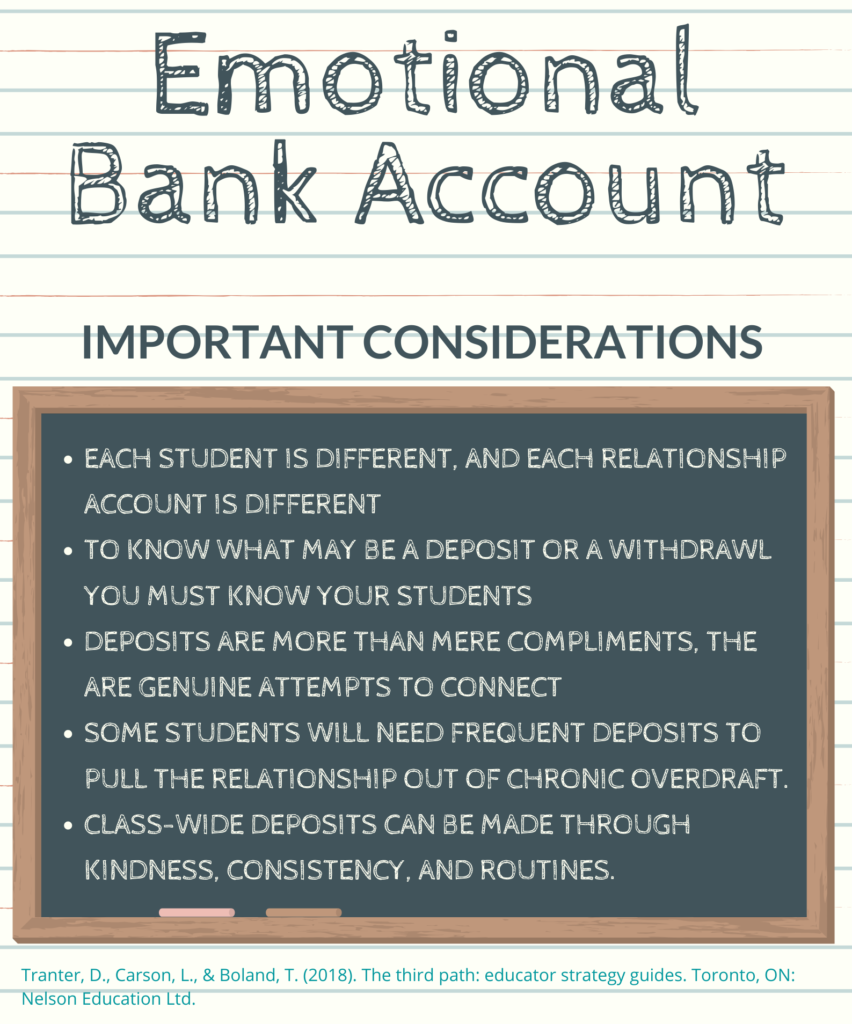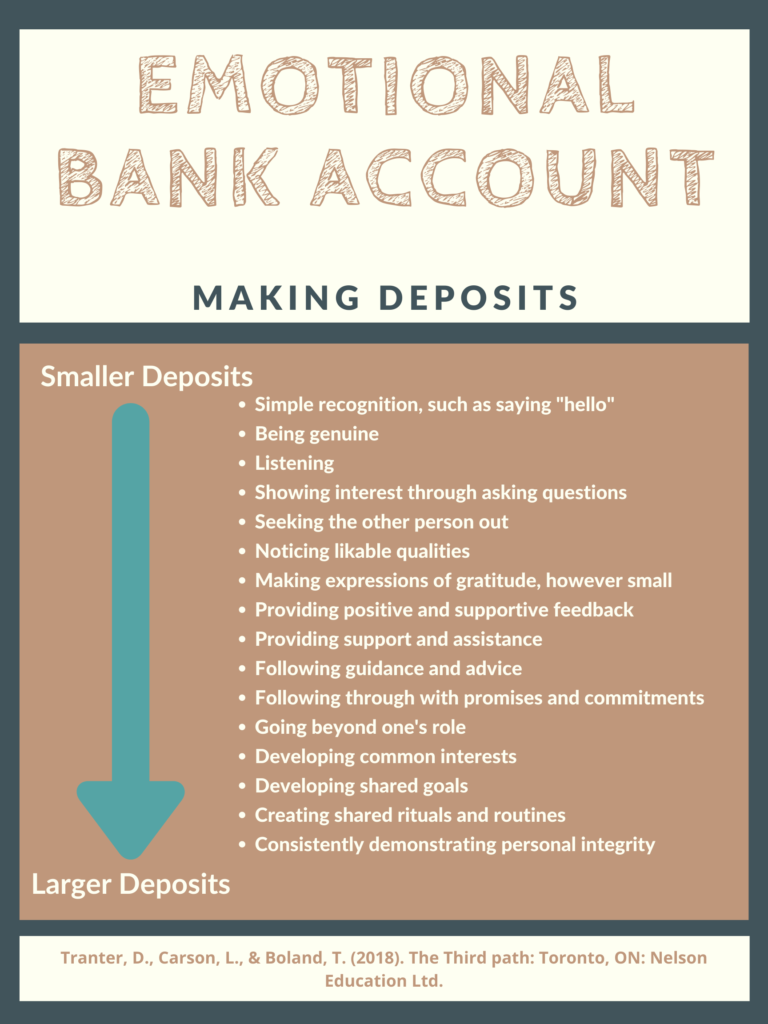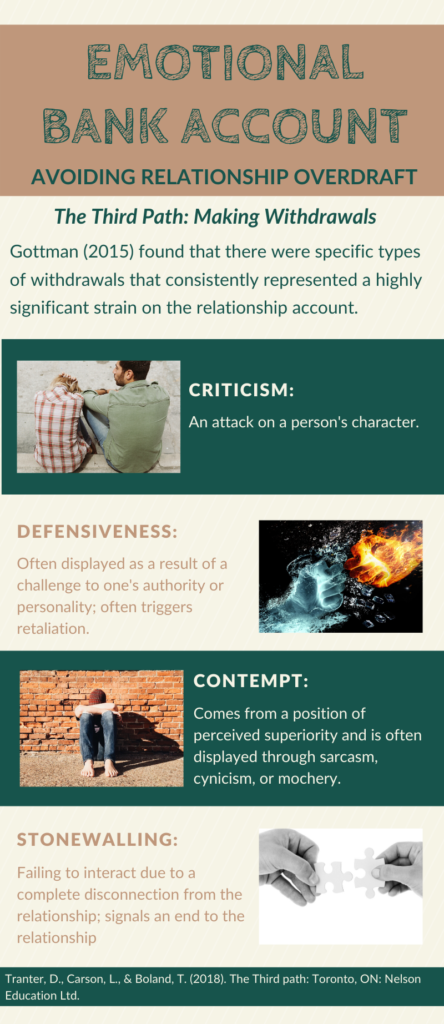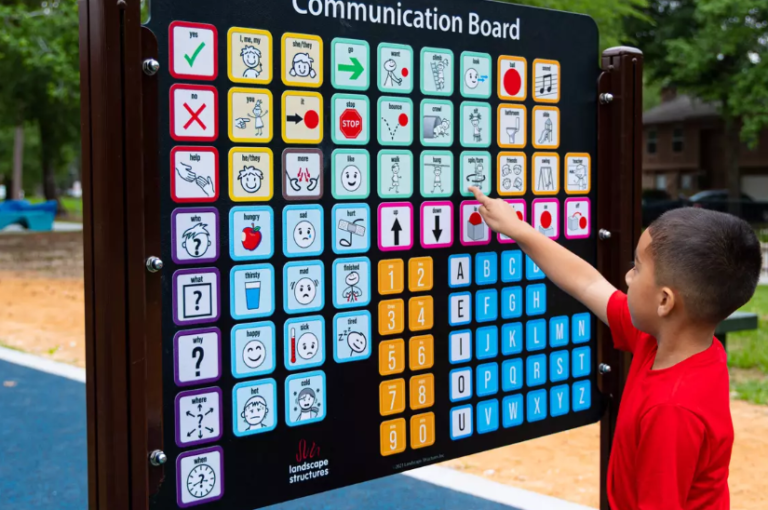As educators, we know the big impact positive relationships between teachers and students have on learning, development and overall achievement. Research supports the benefits of positive relationships between teachers and students as stated by John Hattie (2011), “The educator-student relationship has been found to be consistently among the highest correlates with academic achievement.” As meaningful relationships between teachers and students develop, there is an improved sense of belonging, increased risk taking, innovation and student achievement. However, there can be challenges while developing these relationships and, therefore, a lack of belonging in the classroom between teachers and students. How can we as teachers ensure that we are developing and supporting positive relationships and a sense of belonging for all students in our classrooms?
 The Emotional Bank Account
The Emotional Bank Account
Tranter, D., Carson, L., and Boland, T., in their book The Third Path a Relationship-Based Approach to Student Well-Being and Achievement (2018), suggest one strategy to support belonging with teachers and students is the “Emotional Bank Account”. The Emotional Bank Account is an imaginary record of how you feel about yourself. It is like a real bank account, with deposits and withdrawals (Tranter, D., Carson, L., and Boland, T., 2018). Things you think, say and do act as automatic deposits or withdrawals and affect how you or others around you feel. The goal is to have more deposits than withdrawals (be in the black). Leaving the relationship or individual with a positive feeling of the interaction is how you can make a deposit. The more deposits, the better you feel about yourself, and the better your relationship with others will be. The single most effective and enduring deposit recorded is showing the other person kindness (John Gottman, 2014).
Deposits
As teachers, if we are to develop a sense of belonging in our learning environments, we must ensure that the Emotional Bank Accounts of our students have more deposits than withdrawals. Deposits can include anything from simple recognition, showing respect and politeness, intently listening, showing genuine interest, providing positive and supportive feedback, to developing shared goals or consistently demonstrating personal integrity (Tranter, D., Carson, L., and Boland, T., 2018).

Withdrawals
Teachers naturally make occasional withdrawals during our daily interactions with students. Whether asking a student to focus, providing feedback on an assignment, or ending an enjoyable activity in the gym, educators make withdrawals all the time (Tranter, D., Carson, L., and Boland, T., 2018). We must be aware of our interactions with students. We want to ensure that the withdrawals we make from students, do not put their Emotional Bank Accounts in a state of overdraft. We want our positive interactions or deposits to always outweigh our withdrawals. This fosters positive relationships and provides our students with a true sense of belonging in our learning environments.
References:
Gottman, J. M. (2015). Principia amoris: the new science of love. New York: Routledge, Taylor & Francis.
Hattie, J. (2011). Visible learning for teachers: maximizing impact on learning. Abingdon: Routledge.
Tranter, D., Carson, L., & Boland, T. (2018). The third path: educator strategy guides. Toronto, ON: Nelson Education Ltd.
Tranter, D., Carson, L., & Boland, T. (2018). The Third path: Toronto, ON: Nelson Education Ltd.








